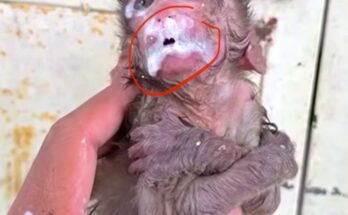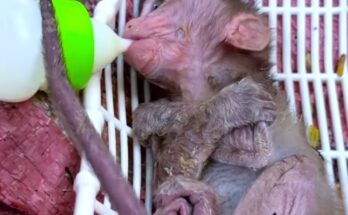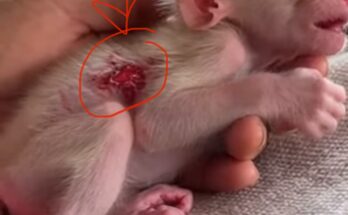In many parts of the world, baby monkeys live close to human settlements. Whether they’re wild, orphaned, or rescued from illegal wildlife trade, accidents can occur — including serious head injuries. When a baby monkey suffers a head injury, time and knowledge are critical for its survival. Here’s a practical, compassionate guide on how to help save a baby monkey after such a traumatic incident.
1. Ensure Your Safety First
Before approaching any injured animal, even a baby monkey, make sure it’s safe. Injured animals can be unpredictable, and frightened monkeys may bite or scratch. Wear gloves if available, and avoid loud noises or sudden movements.
2. Assess the Situation Quickly
Gently check for the following signs:
- Bleeding from the head, ears, or nose
- Loss of consciousness or seizures
- Labored breathing or unusual body posture
- Unresponsiveness or lethargy
If the monkey shows any of these symptoms, it could indicate a serious brain injury or skull fracture.
3. Stabilize the Monkey
Move the baby monkey as little as possible. Support its neck and body fully, similar to how you’d handle a human infant with a spinal injury. Wrap it in a soft cloth or towel to keep it warm. Avoid giving food or water immediately, especially if it’s unconscious or semi-conscious.
4. Seek Immediate Veterinary Help
A veterinarian – preferably one experienced with primates – is essential. Contact a local wildlife rescue center, animal shelter, or primate rehabilitation facility. If none are nearby, a general vet may be able to assist initially with stabilization and diagnosis. Explain clearly that the injury involves potential trauma to the head.
5. Transport Safely
Place the monkey in a small, ventilated box or carrier lined with soft cloth. Keep it dark and quiet to reduce stress. Avoid jostling during transport. If the injury seems severe, lay the monkey on its side with the head slightly elevated.
6. Diagnostic Evaluation
At the clinic, the vet will likely perform:
- Physical examination
- Neurological assessment
- X-rays or CT scans (if available)
The diagnosis will determine the next steps, including medications to reduce brain swelling, treat infections, or manage seizures.
7. Supportive Care at Home or Rehab Center
Recovery from a head injury can take time. Ensure the baby monkey has:
- A quiet, stress-free environment
- Soft bedding and regulated warmth
- Nutritional support as advised by the vet
- Frequent monitoring for worsening symptoms (vomiting, loss of balance, aggression)
Never attempt to treat a serious head injury without expert advice. Home remedies or traditional treatments can do more harm than good.
8. Long-Term Care or Release
Once stabilized, long-term rehabilitation may be needed. Baby monkeys need socialization, cognitive stimulation, and species-specific care. Work with a certified primate rehab center to decide whether eventual release into the wild is possible, or if lifelong care is necessary.
Conclusion
Saving a baby monkey after a head injury is a challenging but deeply rewarding act of compassion. Fast action, proper handling, and professional veterinary care are key to increasing the animal’s chances of survival and recovery. Always remember — the goal is not just to save a life, but to give that life a chance to thrive.



